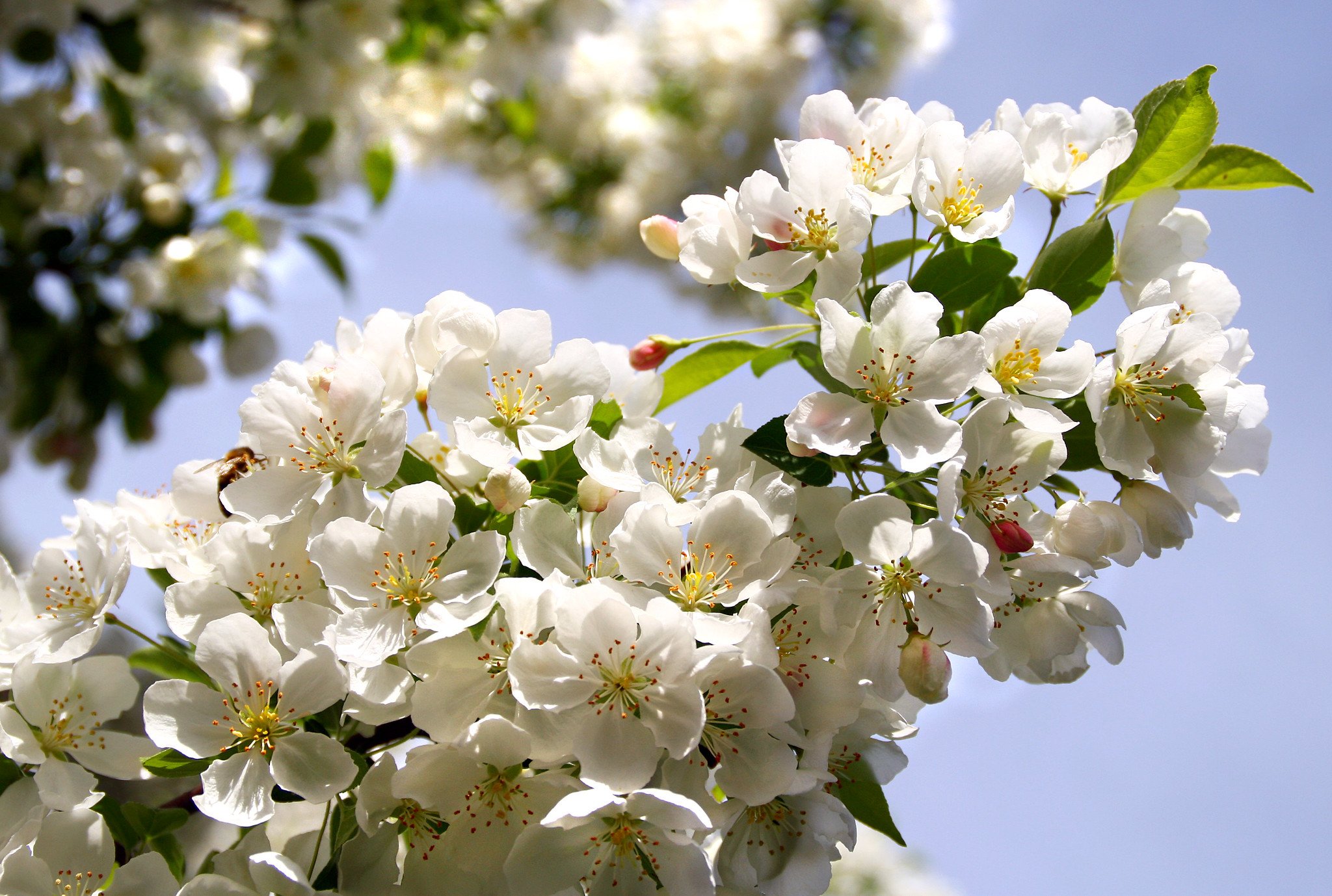Today, I harvested the tart cherry tree-let, developed in Canada for the upper Midwest and southern Canada. I had carefully pruned it and removed any bits of diseased limbs or young fruit and was looking forward to the makings of pies and cobblers.
The great sound for a berry picker is the plop of the first fruits hitting the bottom of the bucket. Even better is the silence that occurs when the bottom is covered.
For once my plan worked. This was the best harvest of cherries yet. Pitting remains but cobblers are on the way!
But in addition to the sweet treats my labors would create, I also must give a big acknowledgement to the pollinators that did the real laboring. During National Pollinator Week (June 19-25), the bees are even more important to celebrate!
Bumble bee on a cherry flower. Photo by khaosproductions FCC
A couple of advantages of growing your own fruit. From the Madison Audubon perspective, many of the plants are great for pollinators, especially the early bumblebees. In our yard, the honeyberries, blueberries, raspberries, and black currants are bumblebee favorites. We split the June berries (service berries) with the neighborhood birds, They get the berries on top and we get the ones I can reach by hand. This is not pure altruism. Such an arrangement keeps me off the step ladder.
American Robin eating from a serviceberry. Photo by Andrew Reding FCC
The second is you can experiment a bit. My great success has been the honeyberries, a well mannered Eurasian fruit. It exists happily, productively and sustainably in the yard and, speaking of cobblers, is the best cobbler filler I've found. Blueberries are a work in progress. Instead of applying stuff like sulphur to acidify the soil they grow in, I'm heavily mulching with the Christmas trees I've commandeered from the neighborhood. The issue might be how much, if any, I should water, in the face of the impending drought.
Of course, failure is always an option. Not fencing the big raspberry patch and the dogs aging beyond the agility needed for rabbit control mean rabbits have feasted on the canes that should bear fruit during the summer for three years. With so many damaged vines, productivity is down over 50%. Cottontails are cute and have their place but I'm really hoping for some owls or foxes to join the neighborhood. I've struggled to save the apricot tree from disease for years. But even with the last three years production of apricots totaling 2, I'm keeping it. For 2-4 glorious days every spring, every wild bee on the block is on the blossoms. The pear tree is an erratic producer and not spraying the apple tree always results in gnarly apples. Thankfully, I make a world class applesauce. The squirrels always beat me to the hazelnuts, a really cool native shrub.
Based on the birds, bees, and other critters I enjoy watching in the yard (the jungle, as my grandkids have named it), I think growing fruit is a helpful activity to local nature as well as my tastebuds. Even the non-native fruits seem to have found a happy place here and elsewhere.
Cedar Waxwing eating fruit from a serviceberry. Photo by USFWS Mountain-Prairie
If you don't want the trouble and occasional heartache of growing your own fruit, the locally grown fruits are at the farmers' markets, with some darling strawberries leading the way. So, support local farmers, starting with strawberry shortcake. And most certainly, support your pollinators.
Take care, stay cool, and pray for rain,
Topf Wells, Madison Audubon advocacy committee
Photo by Liz West FCC







